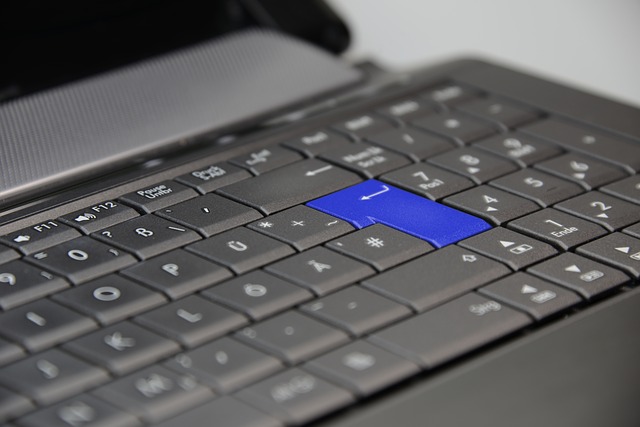
July 2017 Issue
Read, Comment and Enjoy!
Join Translation Journal
Click on the Subscribe button below to receive regular updates.
Are Translators Worried About MT Taking Their Jobs? Yes and No
- Details
- Written by Jake Schild

The fictionalized robot, Hal, made his debut in 2001: A Space Odyssey nearly 50 years ago.
More than four decades later, it doesn’t seem like we’ve reached the level of super intelligence that was portrayed in the film, but we’re definitely getting close. And the idea of a machine-ruled world seems less and less improbable as Artificial Intelligence (AI) continues to advance.
The tension between man and machine is extremely palpable in the language industry, where many have predicted that Machine Translation (MT) will eventually render human linguists obsolete.
There’s been plenty of speculation from industry analysts, but how do translators feel about these predictions? After all, these are the people who will ostensibly be affected the most if AI does reach a level of intelligence that exceeds that of humans.
We talked to three linguists to get their take on the MT debate, and the general consensus seems to be this: MT is advancing, but there’s no need for translators to start packing up their cubicles just yet.
Is The Quality There?
We got insights from some of our translators who have a combined 40 years of experience in the industry to get their take on MT’s quality, assets and downfalls. All three noted the limitations of MT, especially when it comes to picking up on context.
Jorge Moya and Claudia Boulton both referred to MT’s quality as poor.
“Basic texts may work, but as soon as we get into technical or, even worse, marketing or personnel training, MT just does not work,” said Boulton, who translates in German and English.
“I have seen lots of texts, which I had to proofread, where I basically had to re-translate the whole project because it was incomprehensible.”
English-to-French translator Nicolas Kmiec admitted MT won’t do well with literature or medical texts, but noted that the technology has come a long way.
“I believe that the quality is getting better. I was asked by a company to proofread a machine translation in a very technical field and the translation was quite good. Once the terminology is set in the machine, the risk of false senses, mistranslations and vocabulary errors is reduced,” he said.
“And in this kind of field, the translations are pretty straightforward: small sentences, subject-verb-object.”
“Made In A Turkey:” Machine Translation and Context
One of MT’s biggest selling points is its ability to speed up workflows. Where humans might need days to review a document, MT systems could only need a number of hours, if that.
According to Kmiec, the technology can be beneficial if the circumstances are right.
“MT does increase efficiency in very specific circumstances, depending on the subject matter of the translation. But in most other instances, MT is just a waste of time as the terminology used is often the generally accepted definition of a term,” he said.
He added that MT’s lack of nuanced language skills can be an obstacle, too.
“You find translations like “Fabriqué en Dinde,” (French) for “Made in Turkey,” where the country is mistaken for the bird,” said Kmiec.
Moya added that a poor MT translation can add inefficiencies to a workflow, forcing editors to spend more time on a document that doesn’t read well. He admits that it has benefits in certain situations, though. Boulton makes a similar point.
“Looking at the experiences I have had so far, no, (MT) does not make things easier. For someone (not a translator, a member of the general public) who has a text and wants to get some idea of what it’s about, MT may work,” she said.
“But in my fields (technical, legal, marketing), it is even more work than using ‘good old’ translation memories and glossaries and translating by hand.”
The Million Dollar Question
So, what about the future? Do translators fear for their jobs?
As with many substantive issues, there’s no easy answer. But for the time being, the linguists we talked to don’t see an imminent threat in MT. But there’s some wiggle room, there, too.
“Absolutely not,” says Moya when asked if he fears MT will replace human translators. “The added value, touch of humanity, quality and safety makes human translators as essential as they have always been.”
Boulton agrees, saying only human linguists are equipped to pick up on the nuance and context found in source documents.
Kmiec had a different opinion. He explained that MT is progressing rapidly and these advancements have potential to create a paradigm shift in the industry.
“Today’s technology is not advanced enough for MT to replace human translators, but is evolving at a great pace. I think that in ten years’ time, translators will start to work as MT proofreaders in very specific fields like technical translations,” he said.
At the same time, however, Kmiec notes that translating nuanced texts is still a barrier for machines powered by AI. Ultimately, though, he says the future might not be so bright for linguists.
“When we look beyond the ten years’ span, the future of translation and interpreting is very gloomy. Rabelais said in Gargantua that what distinguishes man is his capacity to laugh. Once a machine will have this capacity, once a machine understands what is meant and not only what is said, human translation will be on the decline,” he said.
BIO
A former newspaper reporter and native Minnesotan, Jake Schild is a content strategist in the marketing department at United Language Group.